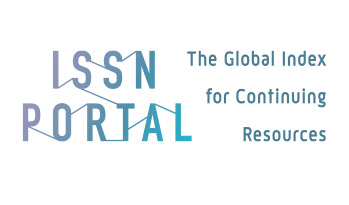HUBUNGAN FREKUENSI MAKAN JUNK FOOD DENGAN STATUS GIZI SISWA KELAS X SMA KARTINI BATAM
DOI:
https://doi.org/10.37776/zkeb.v11i1.694Abstract
Adolescents are the group that most often visits fast food restaurants that sell a lot of junk food, even up to three times a week. Junk food has an unbalanced nutrient content. This study aims to determine the relationship between the frequency of eating junk food and the nutritional status of 10th grade students at SMA Kartini Batam.This research method uses a cross-sectional design carried out at Batam Kartini High School. The sampling technique uses Slovin formula with a sample of 52 students. Data collection using questionnaires and anthropometric measurements. Data analysis using Spearman rank correlation test.From 22 respondents with a percentage (42.3%) whose frequency of eating junk food is rare and 28 respondents with a percentage (53.8%) have normal nutritional status. Based on the correlation test it is known that there is a significant relationship between the frequency of eating junk food and nutritional status in students with p value 0,000. Based on the results of this study it can be concluded that there is a significant relationship between the frequency of eating junk food and nutritional status in 10th grade students at SMA Kartini Batam in 2018.Downloads
References
Achmad, D Sediaoetama. (2010). Ilmu Gizi. Jakarta : Dian Rakyat.
Almatsier, Sunita. 2010. Prinsip Dasar Ilmu Gizi. Jakarta: PT Gramedia Pustaka Utama.
Arisman.(2009). Buku Ajar Ilmu Gizi: Gizi dalam Daur Kehidupan. Jakarta: EGC.
Badjeber,dkk. Konsumsi Fast Food sebagai Faktor Risiko Terjadinya Gizi Lebih pada Siswa SD Negeri 11 Manado. 2012. Vol.1 no.1.
Baliwati, Y.F. (2009). Pengantar Pangan dan Gizi. Penebar Swadaya. Jakarta
Dahlan M.S. 2015. Statistik Untuk Kedokteran Dan Kesehatan. Edisi 6. Jakarta. Epidemiologi Indonesia.
Dantes, Nyoman. (2012). Metode Penelitian. Yogyakarta: ANDI
Kementerian Kesehatan RI. (2017). Penilaian Status Gizi. Jakarta. . (2009).
Sistem Kesehatan Nasional. Jakarta.
. (2011). Keputusan Menteri Kesehatan Republik Indonesia tahun 2010
tentang Standar Antropometri Penilaian Status Gizi Anak. Jakarta.
Khasanah, Nur.(2012). Waspadai Beragam Penyakit Degeneratif Akibat Pola Makan. Cetakan Pertama. Yogyakarta: Penerbit Laksana.
Notoatmodjo, S.(2012). Metodologi Penelitian Kesehatan. Jakarta : Rineka Cipta.
Ozmen, D., Ozmen, E., Ergin, D., Cetinkaya, A. C., Sen, N., Dundar, P. E., & Taskin, E. O. (2012). The association of self-esteem, depression and body satisfaction with obesity among Turkish adolescents. BMC public health, 7, 80.
Riset Kesehatan Dasar (Riskesdas). (2013). Badan Penelitian dan Pengembangan Kesehatan Kementerian RI tahun 2013.
Rumengan, J. 2010. Metodologi Penelitian. Batam: Uniba Press
Sugiyono. 2013. Metode Penelitian Kuantitatif dan Kualitatif. CV.Alfabeta: Bandung.
Sulistyoningsih, Hariyani. (2011). Gizi Untuk Kesehatan Ibu dan Anak. Yogyakarta: Graha Ilmu.
Supariasa IDN Dkk. (2009). Penilaian Status Gizi. Jakarta: EGC
Suyanto. (2011). Metode dan aplikasi penelitian keperawatan. Yogyakarta: Nusa Medika.
Vinsensia. (2010). Jenis Makanan Junk Food. Semarang : bhafana.
















